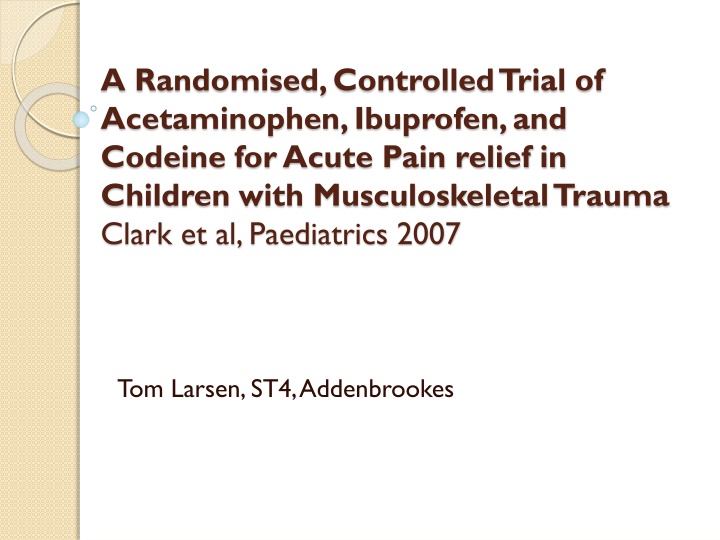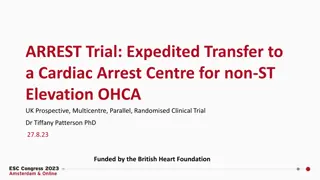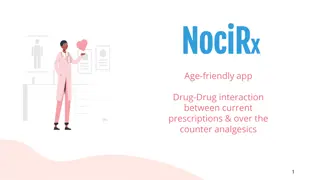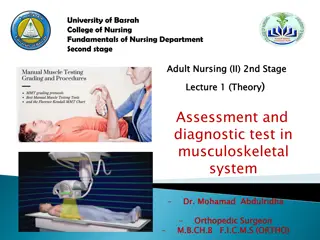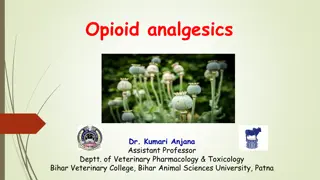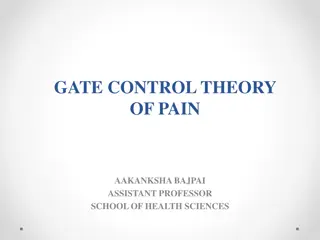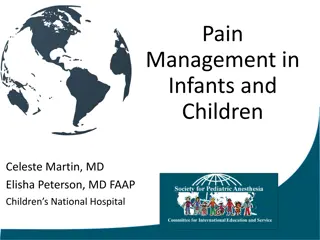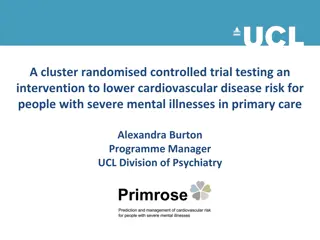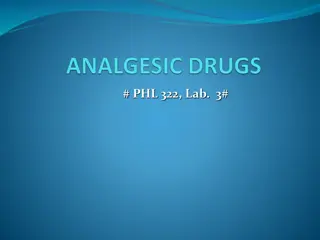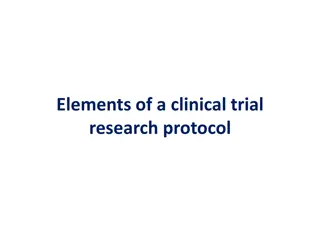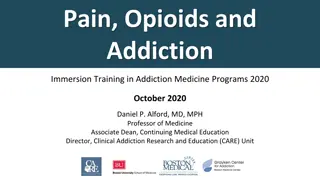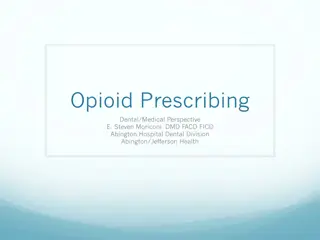Randomised Trial of Analgesics for Children's Musculoskeletal Pain
A randomised controlled trial investigated the efficacy of acetaminophen, ibuprofen, and codeine for acute pain relief in children with musculoskeletal trauma. The study design, recruitment process, interventions, and data collection methods are outlined to provide valuable insights into pediatric pain management.
Download Presentation

Please find below an Image/Link to download the presentation.
The content on the website is provided AS IS for your information and personal use only. It may not be sold, licensed, or shared on other websites without obtaining consent from the author.If you encounter any issues during the download, it is possible that the publisher has removed the file from their server.
You are allowed to download the files provided on this website for personal or commercial use, subject to the condition that they are used lawfully. All files are the property of their respective owners.
The content on the website is provided AS IS for your information and personal use only. It may not be sold, licensed, or shared on other websites without obtaining consent from the author.
E N D
Presentation Transcript
A Randomised, Controlled Trial of Acetaminophen, Ibuprofen, and Codeine for Acute Pain relief in Children with Musculoskeletal Trauma Clark et al, Paediatrics 2007 Tom Larsen, ST4, Addenbrookes
Objectives Clearly stated objective to determine which of the three analgesics, given as a single dose, provides the most efficacious analgesia for children presenting to the ED with musculoskeletal injury. Common clinical problem Lack of pre-existing ED based evidence (equivocal evidence from post operative studies referenced)
Design/Methods Single centre Children s Hospital of Eastern Ontario with ED attendance of 55000 per annum Powered adequately (although power calculation subsequently found to have been done incorrectly) Randomised computer generated sequence Blinded patients, parents and researcher blinded Inclusion criteria: 6 to 17 years old, presenting with musculoskeletal injury which occurred within 48 hrs Exclusion criteria: Contraindication to a study drug, requiring resuscitation, open fracture, IV line in situ, recent use of a study drug, significant cognitive impairment
Recruitment Recruitment 8 hrs/day by research assistant 780 eligable children during this time 336 enrolled 324 refused consent 48 not approached as research assistant with another patient 38 missed 34 other reasons ? Recruitment bias
Interventions 3 arms 15mg/kg acetaminophen (max 650mg) 10mg/kg ibuprofen (max 600mg) 1mg/kg codeine (max 60mg) ? Bias introduced by dosing dose of ibuprofen seems closer to maximum safe dose.
Data collection Children reported pain on visual analogue scale at baseline and at 30 min intervals for 120 mins Asked at 60, 90 and 120 minutes if requiring further analgesia Questioned for adverse events with open questioning in ED and with open questioning and checklist at 2 day telephone follow up Patients discharged before observation period complete given materials to complete remaining scores and mail in results ? Source of bias
Outcome measures Primary outcome: Change in patient s self- reported pain from baseline at 60 minutes Secondary outcomes Change in pain score from baseline at 30, 90, 120mins Requirement for additional analgesia Number achieving adequate analgesia at 60 and 120 minutes (defined as VAS score <30mm) Unclear if outcome measures defined prospectively
Results From 60 minutes and onwards the ibuprofen group had significantly greater improvement in pain score (no significant difference between codeine and acetaminophen at any time point) At 60 minutes more patients in ibuprofen group achieved adequate analgesia No significant difference in number of patients requiring additional analgesia across the groups No significant adverse events No significant difference in rate of minor side effects
Results - subgroups Subgroup analysis showed ibuprofen produced greater improvement in patients with fractures No significant difference between the three medications in patients with soft tissue injuries
Analysis Appropriate statistical analysis of baseline and outcome data Data analysed on a per protocol basis Included if received dose, had baseline data and had primary outcome data ?attrition bias Subsequent intention to treat analysis not presented although stated to be similar to the per protocol analysis presented
Discussion Despite ibuprofen providing greater reduction in pain score only 52% were defined as having adequate analgesia with ibuprofen alone and there was no significant difference in the requirement for further analgesia between the groups Concerns regarding effects of NSAIDS on fracture healing Possible that more adequate dosage of paracetamol may have improved outcomes in this group, particularly in older children
Conclusion Well designed study providing good evidence for the superiority of ibuprofen as a single agent for analgesia after musculoskeletal injury in children Difficulties with recruitment, follow up, dosing and per protocol analysis may introduce some bias.
